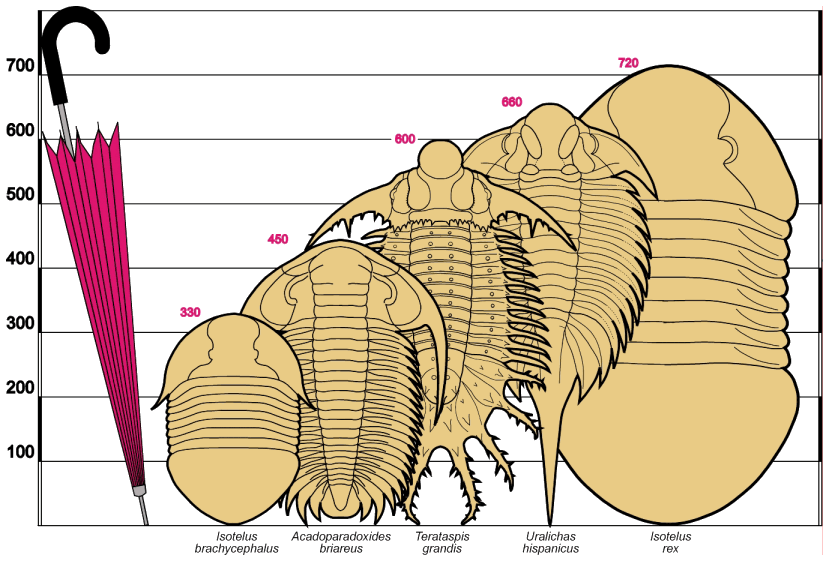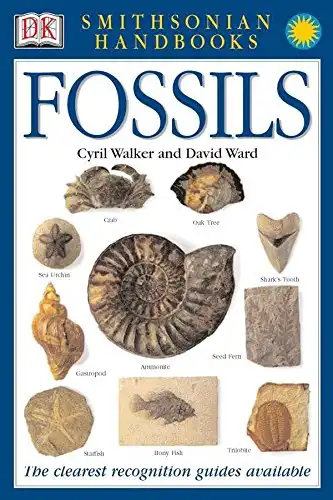The Largest Trilobite Fossil Ever Found
In the last century, larger and larger trilobite specimens have been unearthed, culminating in 1998 with the discovery of Isotelus rex (King of Trilobites), by a group of four colleagues digging for the Royal Ontario Museum. The specimen was found by Dave Rudkin, Robert Elias, Graham Young, and Edward Dobrzanske in Churchill, along the shores of the Hudson Bay in Manitoba, Canada.
This monster is around 28 inches in length (over 71 cm) long, 16 inches wide, and 3 inches at its highest point. This mammoth size effectively inches out previous contenders for the largest find. Trilobites can vary widely, with over 28,000 recognized species. Rex falls into a category as one of the simpler variations, with an unadorned oval shape and eight body segments.
Read More:
- When Did Trilobites Become Extinct?
- 10 Different Types of Trilobites
- Where in Utah to Find Trilobite Fossils
Trilolbite Size Comparison Chart

The Discovery of Trilobites
Trilobites are a prized fossil find in the collection of many a rockhound. With an average size of around 2 inches (5-6 cm), these many-segmented marine arthropods have been collected by the thousands since 1698. That was when Reverend Edward Lhwyd, of South Wales, was the first to uncover what he thought to be some kind of flat fish.
What Are Trilobites
Eventually, these fossils were recognized as arthropods and given the name trilobite for their three distinct body parts, or lobes. And since that first specimen, the variations of these ubiquitous sea-dwellers have thrilled scientists and given new insight into how the creatures adapted to their widespread and varied habitats. Sophisticated, retractable compound eyes or defensive spines are a few of the more elaborate distinctions between species.
More About The Largest Trilobite Fossil – Isotelus Rex
Isotelus rex is thought to have been an infaunal predator and scavenger, burrowing and feeding along the ocean floor. Its habits may have been similar to its still-surviving cousin, the horseshoe crab. which may reach up to 19 inches in length. It is believed by some that both creatures may share the necessity to molt their hard outer shell as they grow. If so, it’s impossible to say what size such a creature may have attained, or whether Isotelus rex may one day be usurped by an even more gargantuan specimen.
Where To See Isotelus Rex Yourself
For now, Isotelus rex reigns supreme and can be found on display at The Manitoba Museum in Winnipeg. For dedicated rockhounds, the search goes on, with many trilobite deposits found globally, including many in the United States. You may not find one of the largest specimens, but sites found in Alabama, Nevada, Ohio, Texas, and Tennesee can provide fascinating hunting for a plethora of species. Efforts continue in the hunt for the next largest trilobite.
- Over 1,000 full-color photographs
- Includes over 500 different fossils
- Makes fossil identification much easier!
(VIDEO) Terrific Facts About Trilobites
- 7 Of The Largest Gold Nuggets Ever Found…Ever! - December 21, 2023
- Find Gold On Your Property? Here’s Why You Should Think Twice Before Spreading the News - December 21, 2023
- The Opalized Crab Claw (And How It Formed) - September 14, 2023
- Online rock and mineral club for collectors of all levels!
- Find community with like-minded rock and mineral enthusiasts.
- Monthly Giveaways!
- Free Access to Entire Digital Library of Products (annual memberships)



